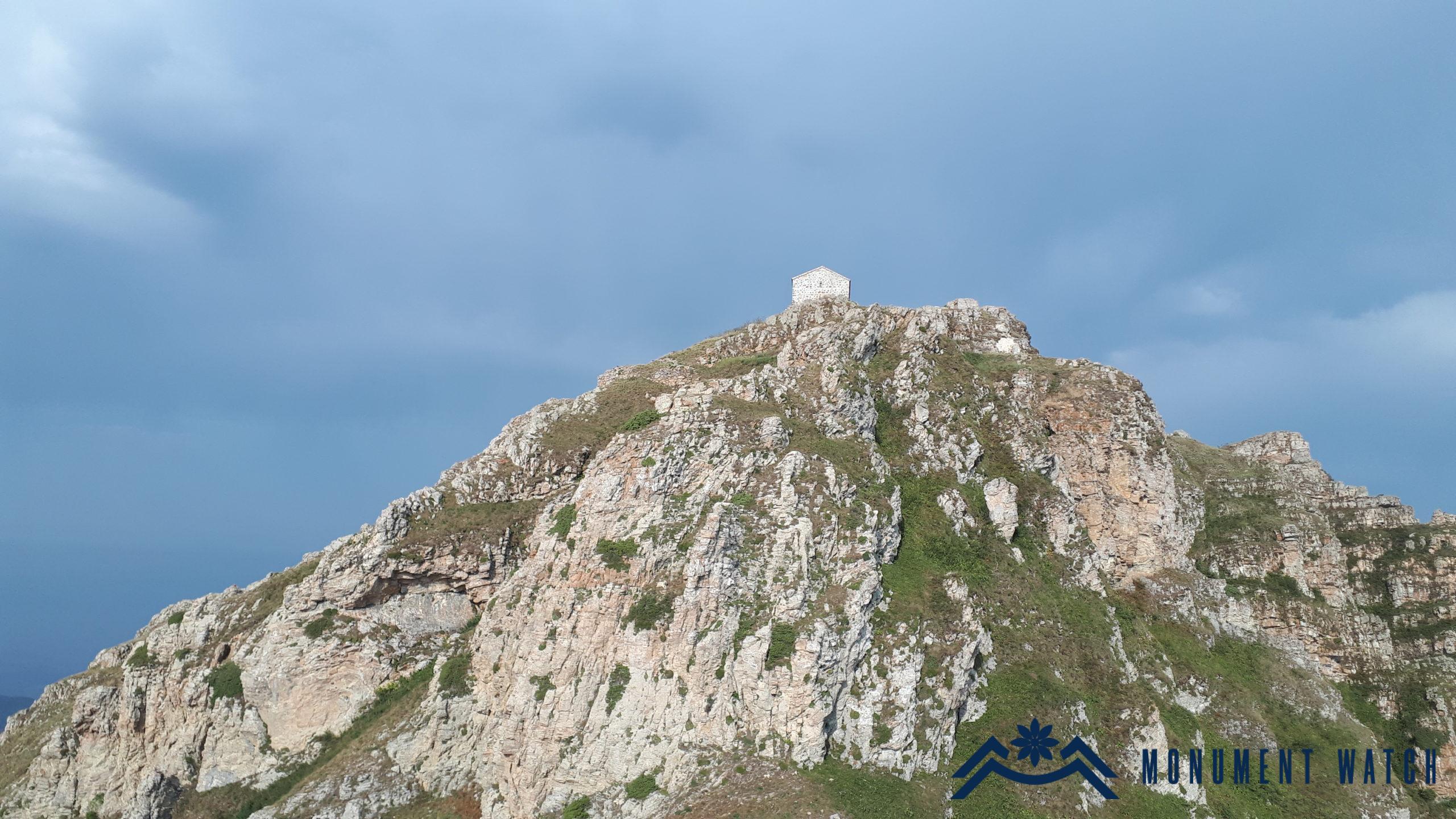Kataro Monastery
Location
Kataro Monastery (Fig. 1) is the highest-situated monument of the Artsakh Republic. It is located in the northwestern part of Hadrut region, on the peak of Dizapayt mountain, at an altitude of 2478 meters (Fig. 2).
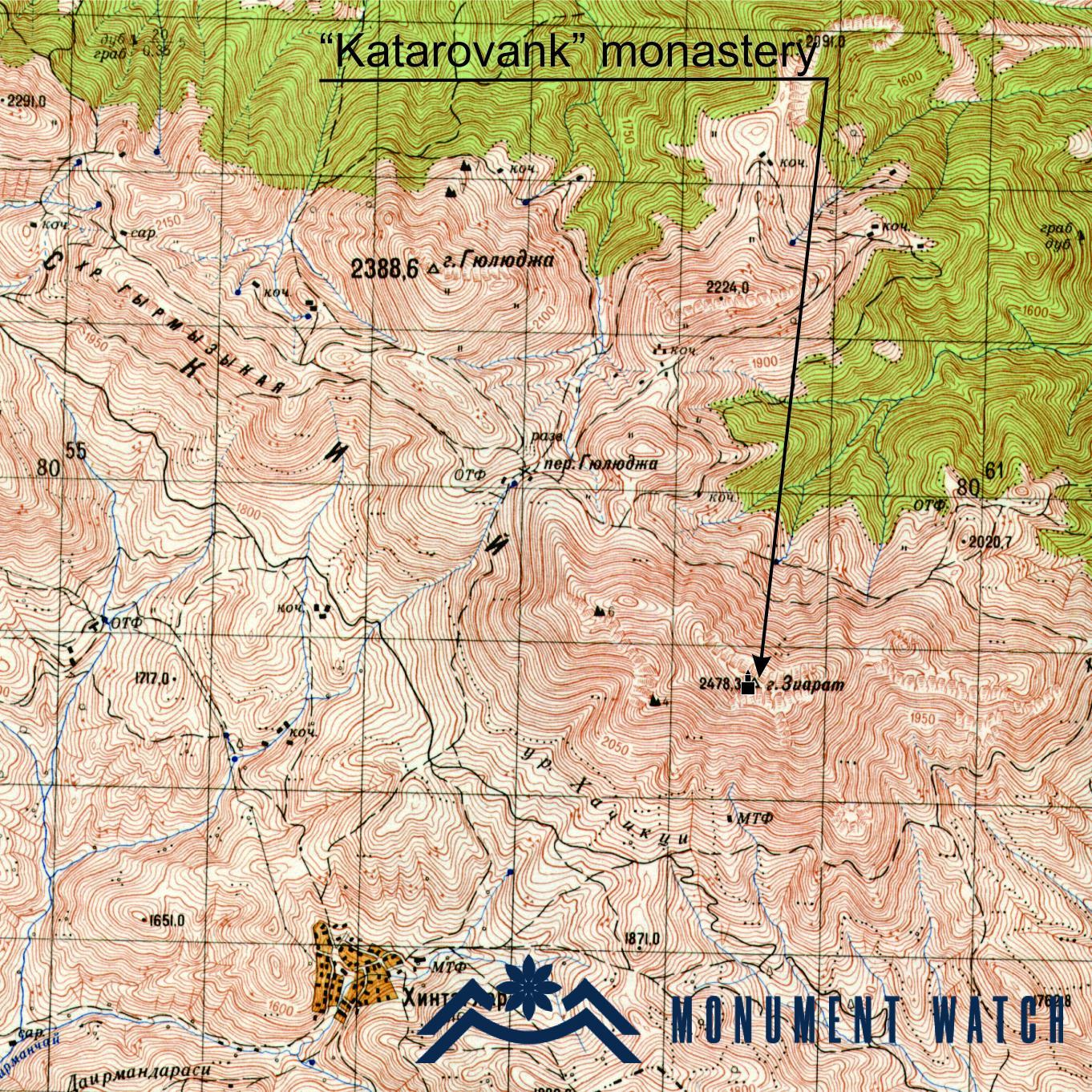
Katarovank
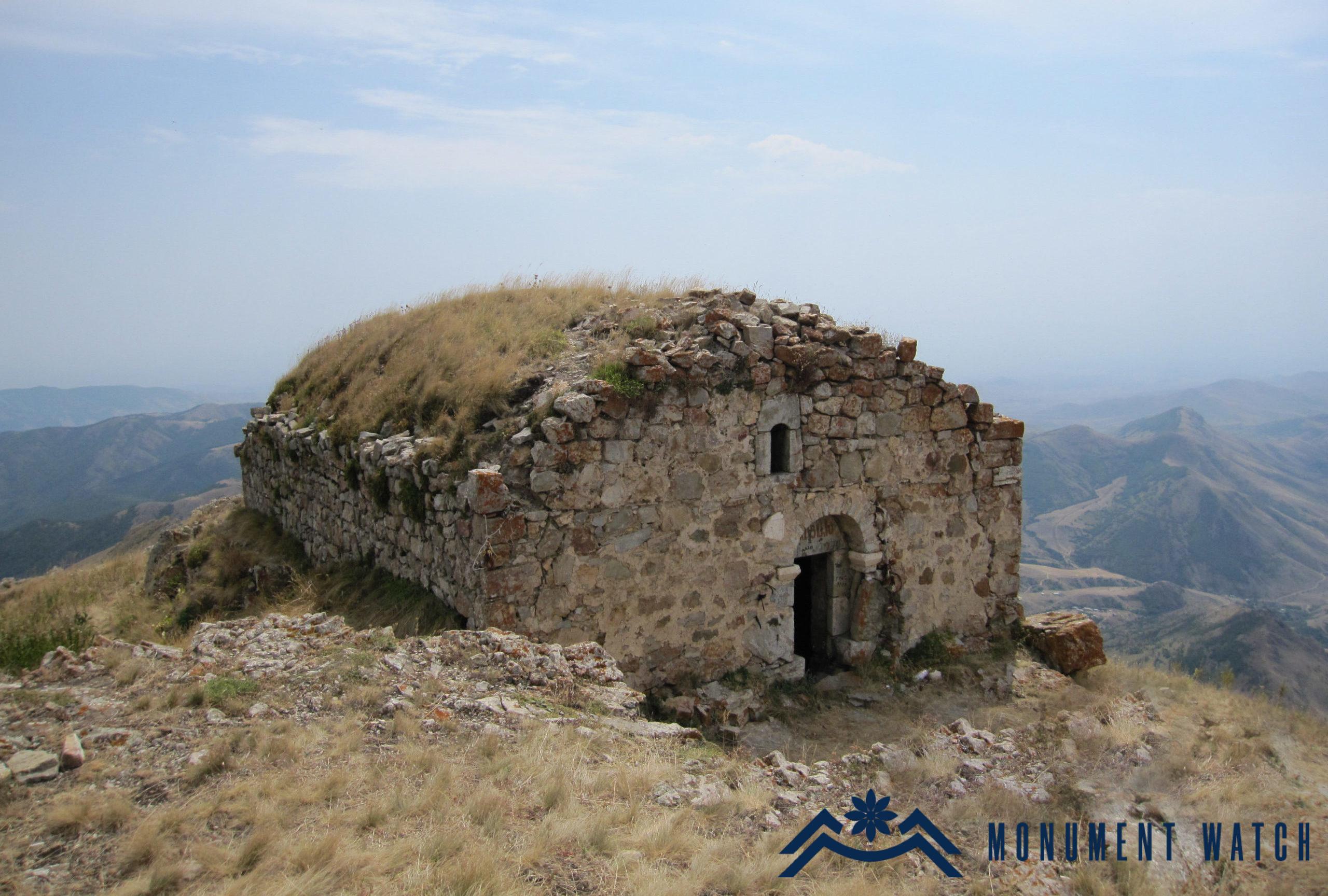
Fig․1 Kataro Monastery before renovation, 2010, photo by G. Budaghyan.

Fig. 2 Mount Dizapayt from the south-east, 2020, photo by G. Budaghyan.
Historical overview
A number of bibliographic information about Dizapayt mountain and Kataro Monastery has reached us, which refer to the early history of the spread of Christianity in Artsakh.
The name of the mountain and the monastery is related to a legend, according to which Sanesan – the king of the Maskuts, killed here his three sons who had converted to Christianity and 3870 hermits who joined them (Kaghankatuatsi 1983, 119). The early structures of the sanctuary were regularly destroyed, the present church was built in 1870.
Architectural-compositional examination
The current structure of the church has a rectangular plan (Fig. 3).

Fig․ 3 The plan of Kataro Monastery, measurers: Karapetyan S., Zaryan V․, Mkrtchyan Sh․, Historical-architectural monuments of Nagorno Karabakh, p. 121.
It is 11.75 m long, 6.70 m wide, 5 m high. It is a single-nave basilica, with a vaulted roof, built of local rough-hewn stone, the altar is semicircular. The only entrance opens from the west, the windows from the eastern, western and southern sides. The following inscription has been preserved on the lintel: “This holy temple was built by Dometsi Hakop, my sister Javahir Gaysumyan and her husband Harutin. Whoever reads, let him bless all. The master was Ghukas Tsamdzoretsi”.
The remains of the adjacent building (dimensions: 9.8x3.8 meters) and ramparts south of the church have been preserved (Fig. 4).

Fig. 4 A part of the ramparts on the southern side of the monastery, 2020, photo by G. Budaghyan.
The church of the sanctuary used to be a place of pilgrimage not only for the residents of Dizak, but also for the population of other cantons of Armenia. This is evidenced by the donative inscriptions and the small khachkars donated to the church by the pilgrims, on which the names of the donors and their settlements are recorded. Evidence of this is the fragments of khachkars and inscribed stones found during the renovation activities in the territory of the monastery, one of which is broken into two fragments and has the following content: “This Holy Cross is in memory of Mkrtich Gabrielents from Agulis village, 1887” (Fig. 5).
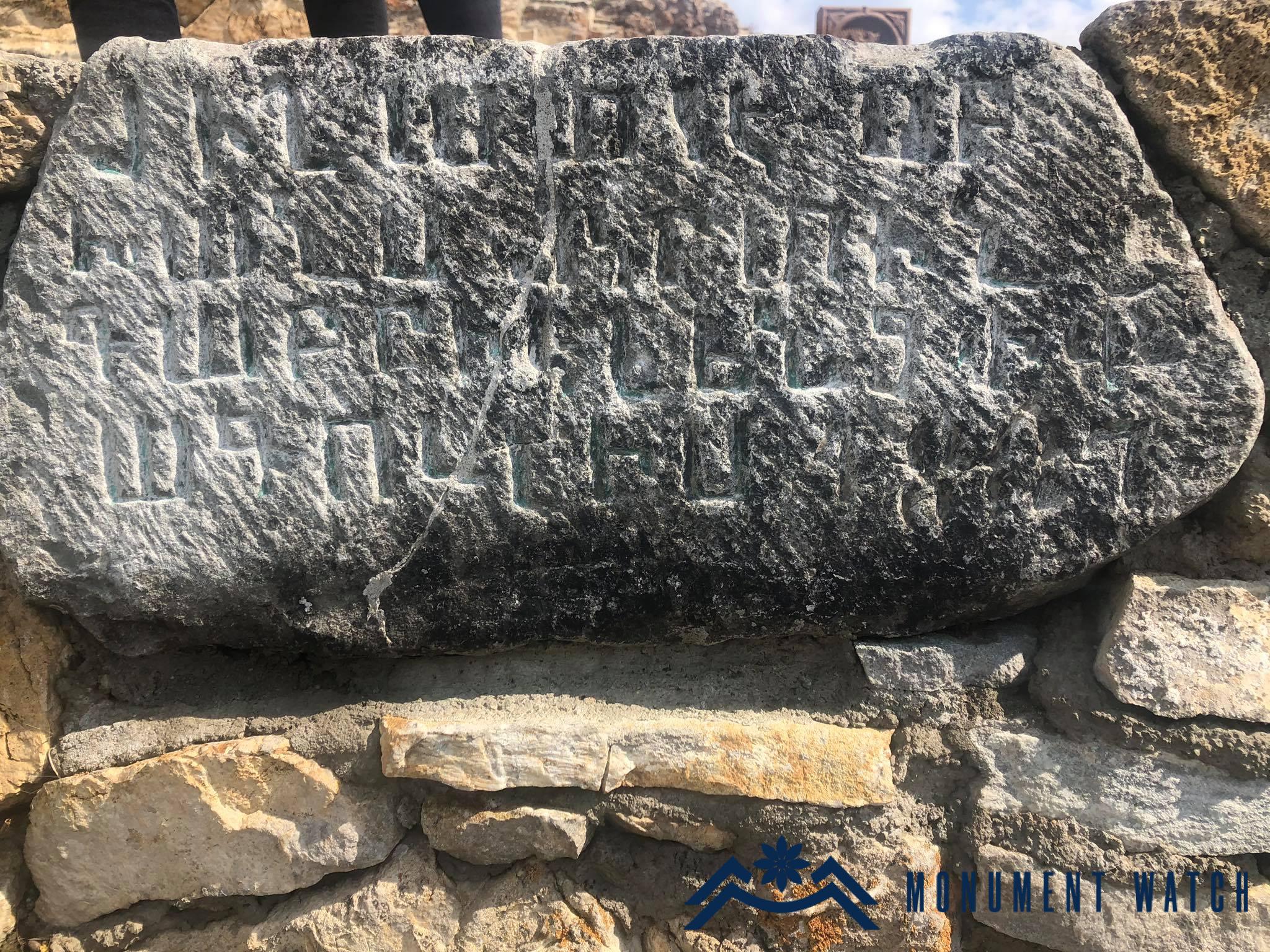
Fig. 5 One of the inscribed stones dedicated to the monastery, 2020, photo by G. Budaghyan.
A small donative khachkar was erected here in 1895 by a resident of Taghavard Grigor Akobjanov. The sanctuary was a well-known place of pilgrimage also for Muslims, by whom it received the name of Ziarat (place of pilgrimage).
The condition before, during and after the war
In 2015, the renovation activities of the church were implemented with the support of the residents of Khandzadzor village and presently Russian citizens – the Arakelyan brothers Armik, Narvik and Tigran. It was renovated by the design of restoration architect Samvel Ayvazyan, by the hand of Martiros Chalumyan, taking into account all the details, at that the roof was repaired in the similar way as the tiles preserved from the previous roof (Figs. 6, 7).
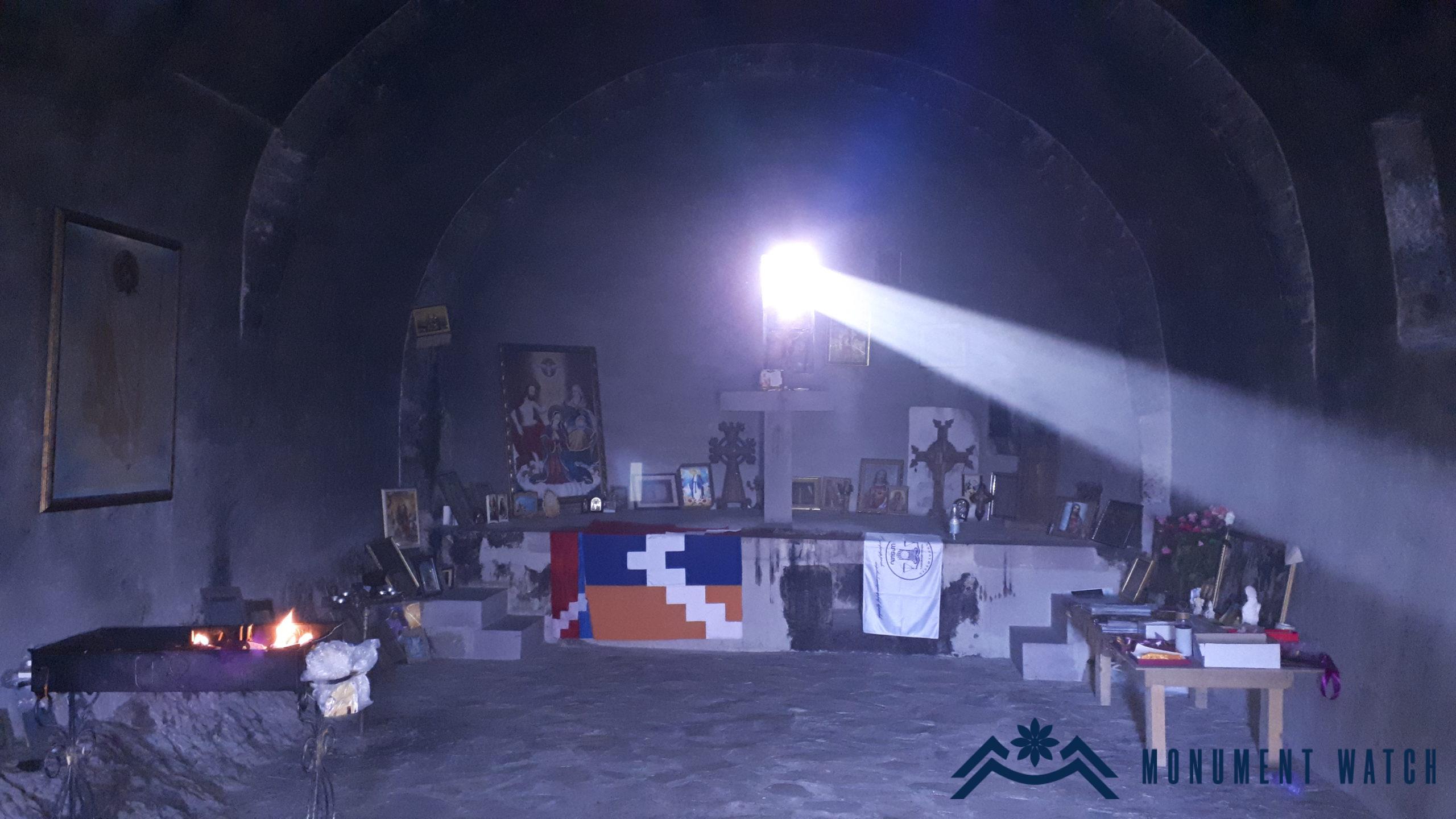
Fig. 6 Kataro Monastery after the renovation in 2015, 2020, photo by G. Budaghyan.
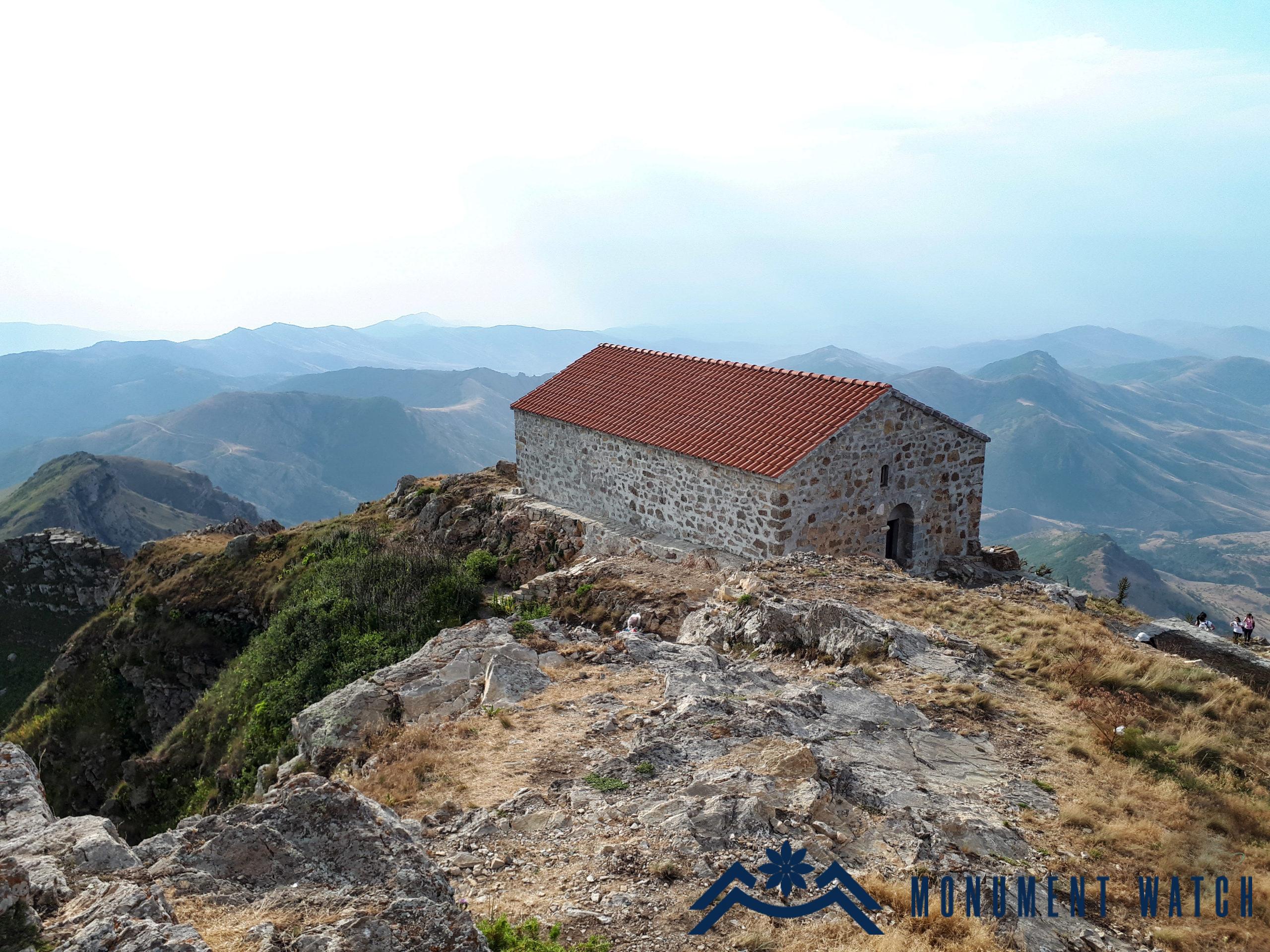
Fig. 7 Kataro Monastery from the east, after renovation, 2018, photo by G. Budaghyan.
The church was not damaged during the 44-day hostilities that launched in September 2020, but in the period after the complete occupation of the Hadrut region in December, it becomes clear from the videos posted by the Azerbaijani side that the old and new khachkars dedicated to the monastery were destroyed (Fig. 8).
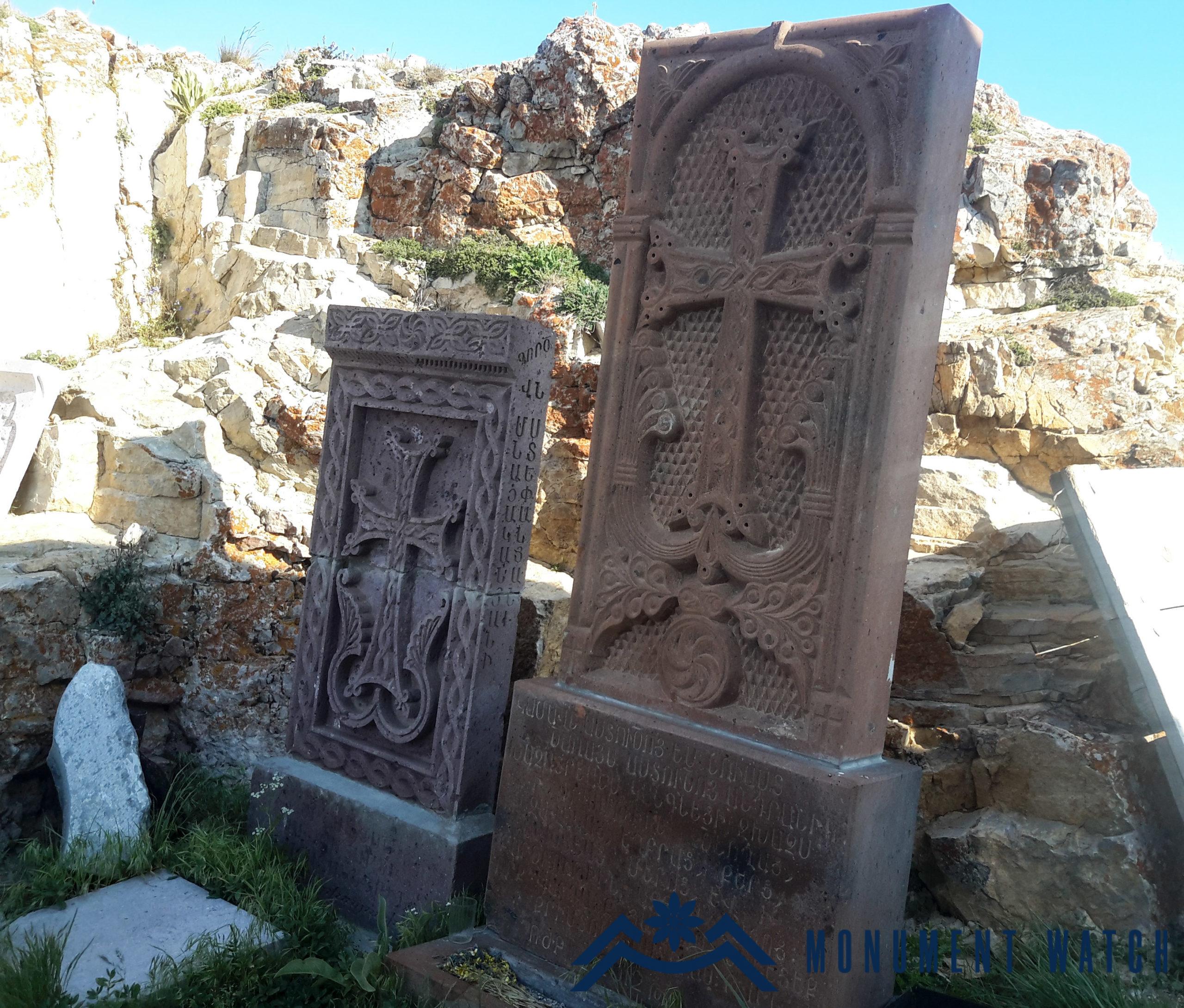
Fig. 8 New khachkars installed in the territory of the monastery in 2010 – 2012, 2020, photo by G. Budaghyan.
The peak of Dizapayt has been turned into a military base by the Azerbaijani armed forces, and the Kataro Monastery serves as a shelter for soldiers and a weapons depot.
Bibliographic examination
Movses Kaghankatvatsi referred in detail to Dizapayt Mountain and Kataro Monastery in his work “The History of the Country of Albania”.
“Before Lord Abas was shepherding over Albania, the martyriums had been set on fire by the enemies: During the reign of King Vachagan and Bishop Garnik of Amaras, they appeared in Kataro Monastery on Mount Dizapayt, whose names are: St. Movses, St. Daniel, St. Yeghia. These were the sons of King Sanesan of the Maskuts, who were disciples of St. Gregoris: there were three thousand eight hundred and seventy men with them. They all hurried to Mount Dizapayt to lead a herbivorous life. Following them, bloodthirsty Sanesan drew everyone to the sword, which took place on the ninth of the Navasard month (i.e.: August 20)” (Kaghankatvatsi 1983, 90). In all likelihood, this narrative had a historical basis. Pavstos Buzand says that in the 4th century, by the order of the Persian king, king Sanesan of the Maskuts attacked the Armenian world and “․․․ He crossed the Armenian border, the great Kur River, they were spread and filled the Armenian world… They covered the country, destroyed it, took captives, completely devastated it, were spread all over the country up to the small town of Satagh, to the border of Atrpatakan of Gandzak ․․․” (Buzand 1968, 76).
Mkhitar Ayrivanetsi briefly brings the record of Kaghankatvatsi under the year of 352: “Movses and Daniel with 3870 saints on the peak of Dizapayt” (Ayrivanetsi 1867, 61). Valuable information about the Dizapayt Monastery and Dizak canton has also been preserved in the Armenian handwritten colophons. In one of them, written in 1775, the scribe asks: “…Remember in the God-addressed prayers of yours my spiritual father, the covenantal leader of the land of Dizapayt – the late Bishop Yeremia” (Acharyan 1910, 18).
In his work “Monasteries of Artsakh”, H. Voskyan mentions: “A little far from the fortress of Dizapayt, only a chapel can be observed on its ruins today. The (Haysmavurk) Synaxarion attributes the name of Dizapayt to the following incident: “And the sons of the general (Theophilia) – Movses and Yeranoghis (Anerogheges) and the rest of the faithful army, fled to the mountain called Dizapayt, after which the outlaws killed them… and they burnt them with fire, and called the mountain Dizapayt, forasmuch they heaped up wood on them and burnt”. In that place sanctified with their remains․․․ “After some time, some of the recluses – male hermits came and settled there and created their monastery on the place” (Voskyan 1953, 16-18).
Bibliography
- Amirjanyan S., Dizak, Yerevan, 2006.
- Acharyan 1910 – Acharyan H., List of Armenian manuscripts in Tabriz, Vienna.
- Ayrivanetsi 1867 – Chronological History of Mkhitar Ayrivanetsi, St. Petersburg.
- Buzand 1968 – Pavstos Buzand, History of Armenia, Yerevan.
- Kaghankatvatsi 1983 – The History of the Country of Albania of Movses Kaghankatvatsi, Yerevan.
- Mkrtchyan Sh., Historical-architectural monuments of Nagorno Karabakh, Yerevan, 1985.
- Voskyan 1953 – Voskyan H․, The monasteries of Artsakh, Vienna.
Kataro Monastery
Artsakh
